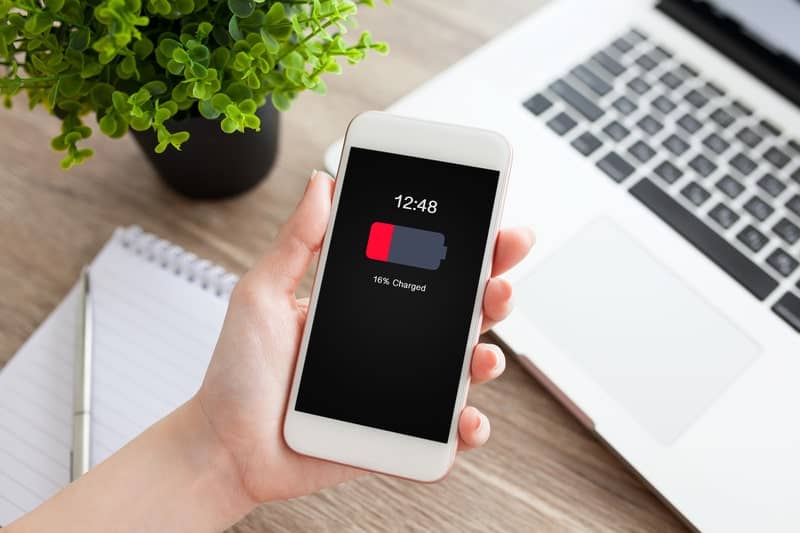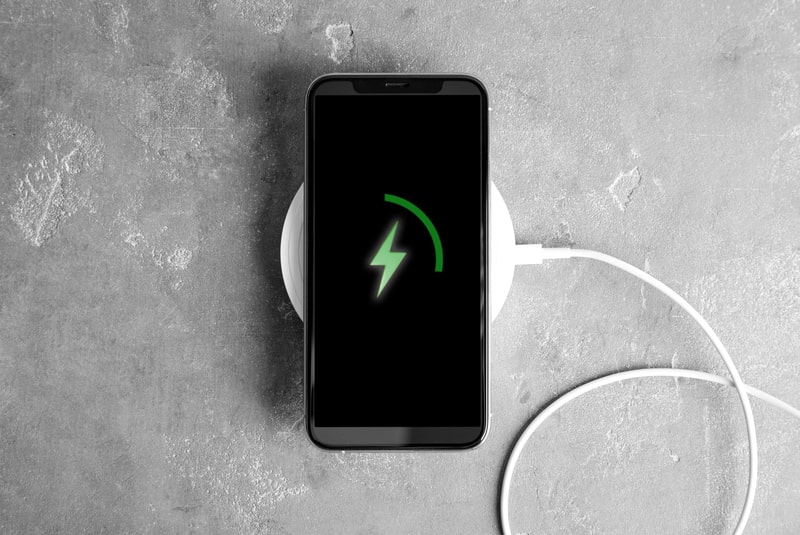Stop Weak Cell Signal From Draining Your Phone Battery
Posted on 1/27/2023 by Meredith Pond
Cell phones are a must-have in our daily lives. We use them to reach out to family, friends, and co-workers, shop for groceries, order takeout, pay our bills, and so much more. If you’re in a bad signal area, the resulting weak cell signal causes your phone to work harder to keep you connected. At the same time, if your battery gets low quickly, it can affect your ability to get and maintain a solid cell phone signal.
As powerful and indispensable as our cell phones seem, they are not invincible. All cell phone batteries eventually lose their ability to hold a full charge, and poor reception accelerates this loss of capacity. If you’re always looking for an outlet to recharge your phone, then it’s time to track down and eliminate the culprits responsible for draining your battery. Here are a few tips to help your phone retain its energy.
What causes weak cell signal?
Dropped calls and low bars are signs of a weak cellular signal. About three out of four Americans deal with these frustrations at least occasionally. While it seems logical to blame your carrier, most often it’s not their fault. Whatever is causing your weak cell signal, weBoost can solve the problem in your home, business, or vehicle. That said, let’s look at some of the more common causes.
Dead zones
Cellular service providers haven’t covered every inch of the country yet. Some areas are dead spots with no cell towers near enough for your phone to communicate with them. Dead zones can also result from obstructions between the user and the closest cell phone tower. Your carrier has a cell tower map that can show you if you are in one of these unfortunate spots with weak cell signal.
Urban congestion
Cell towers are built to handle massive traffic, but sometimes, the demands on them are too great. Even in urban areas, every mobile device is reaching for a spot. If your cell phone tries to connect to a tower that’s low on bandwidth, then you’ll likely get a weak cell signal or dropped call.
In urban areas with a lot of buildings, the building materials used in those structures can also cause weak cell signal penetration, causing dead zones especially indoors.
Inclement weather
Mobile devices transmit and receive radio waves through the air. Unfavorable conditions such as high humidity, wind, rain, thunder, lightning, heavy cloud cover, and snow can scatter these waves. Consequently, the signal between you and the tower may get blocked, causing weak cell signal for your phone.
Trees and mountains
In areas surrounded by large trees, the dense foliage is likely to block some cell signals. Mountainous or hilly regions are prone to poor reception because the cell signal from the nearest tower may weaken as it travels through rocky terrain. If you’re on one side of a mountain and the closest tower is on the other, you’ll probably experience weak cell signal.
Solar flares
Eruptions on the sun’s surface send shock waves through space, sometimes disrupt cellular phone service. These solar flares affect the Earth’s magnetic field and scramble satellite signals. When this happens, mobile devices around the world seem out of order for a bit.
How to avoid battery drain from weak cell signal
While you can’t control solar flares, mountains, or the weather, you can take action to preserve your phone’s battery. Here are several tweaks that give your phone an instant extension of energy.
Adjust your screen brightness
Vision experts say that keeping your screen’s brightness at its highest setting doesn’t confer any extra benefits for your vision, and it certainly doesn’t help your battery. Turn the brightness and OLED settings to their lowest levels your eyes can manage. Try inverting the colors, turning on dark themes, or increasing the text size to make reading easier and decrease battery use.
Time out sooner
Check on your screen time out setting. This determines how soon your screen shuts off after not getting any input, ranging from one minute to never. You’ll extend your battery life by using the shortest timeframe possible.
Enable battery saving mode
The battery saver or low power mode on your smartphone shuts off or reduces non-essential features. Many phones automatically switch to this function when your battery level reaches a certain percentage, but you can turn it on yourself at any point to save some juice. The battery saver mode typically stops apps from syncing (including email) and dims your display brightness, as well.
Unplug when fully charged
Once your phone is at 100%, keeping it plugged in won’t help the charge last longer. In fact, this makes the battery weaker over time. Research suggests that when reaching full charge while still plugged in, some lithium-ion batteries in cell phones heat up an extra 9 degrees, potentially affecting their ability to carry a charge.
Avoid extreme heat
Extreme heat can damage your phone’s internal components. It can cause data loss and could slow down your device over time. Heat can also lead to battery leakage or a forced shutdown. Avoid leaving your phone in places where it could overheat, such as in direct sunlight or in your car on a sunny day.
Turn on airplane mode
Your phone is constantly on the lookout for a signal, working nonstop to secure a stronger one. This is heavy work that depletes your battery. If you don’t need cellular service for a few hours, turn on airplane mode to disable your cell service. Some devices leave WiFi access on in airplane mode, allowing you to still get some connectivity while saving your battery.
Tap into WiFi when you can
While connecting with WiFi is more efficient than with cellular data, leaving your WiFi enabled when you aren’t using it can also be a drain. When your WiFi capability is turned on, your battery’s power suffers the same way it does when searching for a cell signal. If you aren’t near a WiFi network, turn WiFi off to help your battery last longer. If you decide to enable airplane mode to save battery, check to see if your WiFi stays on, so you can toggle it off if you’re not in range.
Customize auto updates and notifications
When your phone is receiving a connection, all your apps automatically refresh simultaneously, taxing your battery. App notifications that wake up your display screen are tiny but hungry energy leeches, too. Preempt these drainers by setting your auto-update and notification settings to manual for all but your most important apps. You’ll need to check each app for updates, but your battery will benefit from the relief.
Keep apps you need up to speed
Many app updates come with bug fixes that improve your phone’s efficiency, so they don’t use as much energy. You might want to scour through your app list, too. Purge your system of things you don’t use that could be inflating your energy consumption, such as those ringtones you downloaded and forgot about.
Use paid apps
Did you know that free apps tend to zap your phone’s power? This is because most of their energy consumption goes to power ads. Apps can even sap your phone’s battery power when they are idle. It might be worth it for you to invest a few dollars for paid versions without ads. Check your battery settings to see which apps are draining your battery unusually fast.
Download tunes, books, and shows
Streaming services such as Spotify, Pandora, Audible, and Netflix require your phone to keep an active wireless connection, which takes up a lot of power. These providers let you download playlists, audio books, TV shows, and movies so you can listen and watch offline without a battery-draining internet connection. Be sure to download while on WiFi and plugged into a power source to save even more energy.
Give your weak cell signal a boost
Sometimes, your best efforts to save your battery just aren’t enough because of spotty reception in your home or on the go. In areas with poor reception, your cell phone uses more power to search for a signal. A cell phone booster can pick up and strengthen weak cell signal, so that your phone doesn’t have to exhaust its battery in constant searching.
weBoost cell phone signal boosters boost weak signal to bring you faster data and internet capability along with clear calls that hold until you hang up. Our products perform with any cell phone or mobile device. They will also work for all carriers and networks across the United States and Canada. Our boosters for homes, offices, and vehicles are built to stop poor reception wherever you are.






